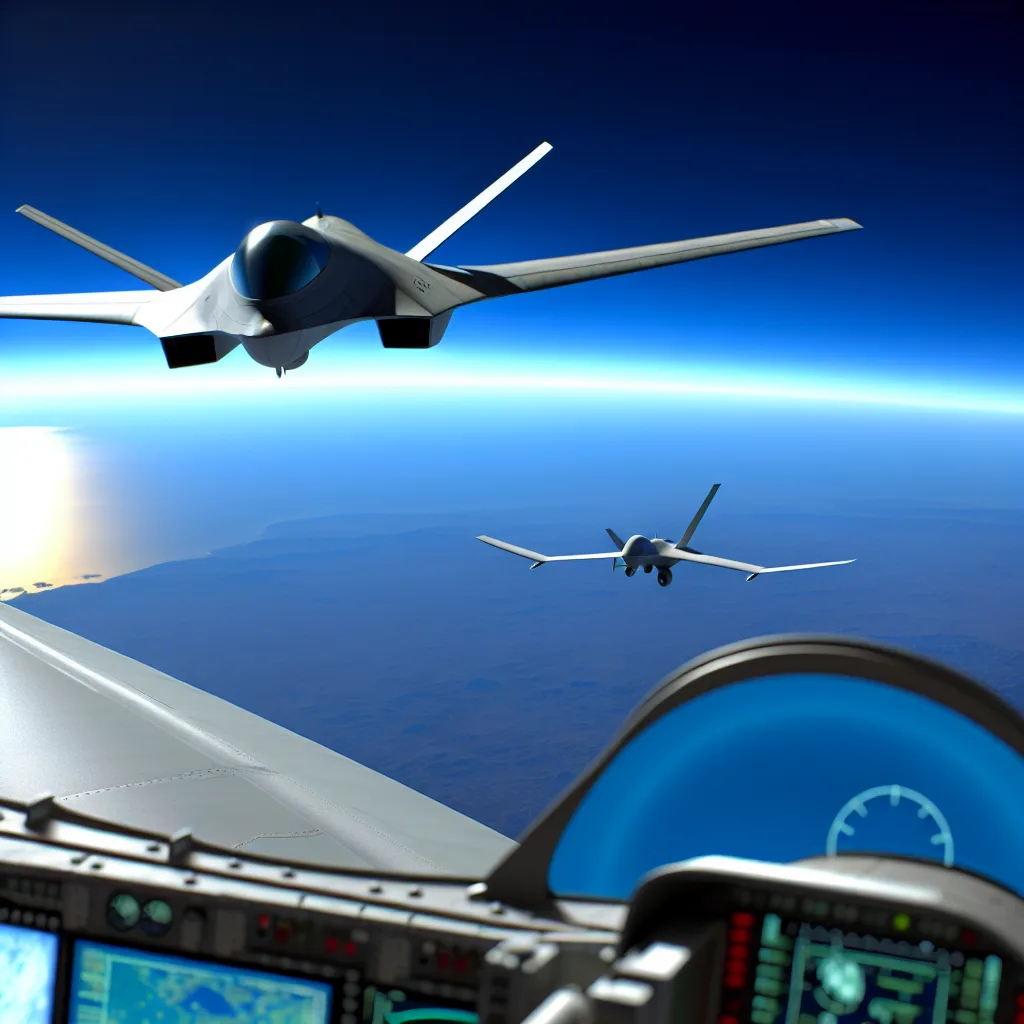It’s not science fiction anymore. A quiet shift is happening in the skies, and it has everything to do with AI in the military.
I was reading a piece the other day that really stuck with me. It was about how the U.S. Air Force is facing a challenge it hasn’t seen in decades, and its solution sounds like something straight out of a movie. We’re talking about AI-piloted fighter jets flying alongside human pilots. This isn’t just some far-off tech fantasy; it’s a very real and urgent development. The big push for AI in the military isn’t about getting cool new toys; it’s about confronting a stark reality.
For a long time, the U.S. Air Force was so dominant that it didn’t really need to make massive changes. But that era is over. According to retired Air Force Lt. Gen. Clint Hinote, that long period of success meant the incentive to innovate just wasn’t there. Now, things are different.
So, what’s the big deal? In a word: China.
The Sobering Math Behind AI in the Military
The Chinese air force has been advancing at an incredible speed, rolling out new stealth fighters and their own AI-powered drones. This creates a serious numbers problem. If a conflict were to happen in the Pacific, it would be on their home turf.
As Hinote put it, “it means they can bring many, many more things to bear than we can.”
To even stay competitive, U.S. forces would need to achieve kill ratios of 10-to-1 or even 20-to-1. Think about that for a second. For every one U.S. plane lost, twenty of the adversary’s would have to be taken down. When military strategists run war games with those kinds of odds stacked against them, the outcomes are not good.
“The war games don’t turn out very well,” Hinote admitted. “We lose.”
That’s a pretty blunt assessment. You can’t solve a 20-to-1 problem by just building more multi-million dollar jets and training more pilots. The cost in both money and human lives would be staggering. So, you have to change the game entirely.
Enter the “Robot Wingman”
This is where the new strategy comes in. The Air Force is developing what are called Collaborative Combat Aircraft (CCAs). These are essentially autonomous, AI-driven drones designed to fly as wingmen for human pilots. You can get a sense of the official program and its goals directly from the U.S. Air Force’s own acquisition page.
Instead of a one-on-one dogfight, a single human pilot could lead a team of these AI wingmen. These drones could be sent ahead to scout, act as decoys, or carry extra munitions. They can take risks that you’d never ask a human pilot to take. This approach multiplies a pilot’s effectiveness and helps even out those daunting numerical odds.
The idea isn’t to replace human pilots but to augment them, giving them a huge tactical advantage. It shifts the focus from pilot-versus-pilot to one human mind commanding a whole squadron of networked, intelligent machines.
Why This Shift Is Happening Now
This isn’t just a technological shift; it’s a strategic one. The cost of a single advanced fighter jet like the F-35 is immense, and losing one is a major blow. An autonomous drone, while still advanced, is designed to be more affordable and, crucially, expendable.
This new kind of air force could potentially field a larger, more flexible, and more resilient fleet. Of course, this introduces a whole new set of questions. The ethics and strategy of autonomous warfare are complex topics, and organizations like the Brookings Institution have explored these challenges in depth. How much autonomy do you give a machine in a combat situation? How do you prevent errors? These are the questions engineers and policymakers are grappling with right now.
But one thing is clear: the era of simply having the best individual aircraft is fading. The future of air superiority seems to lie in networks, data, and the smart integration of AI in the military. It’s a fascinating, if slightly unnerving, glimpse into what comes next for national defense. It’s a quiet revolution, born out of necessity, that’s unfolding in the skies above us.
